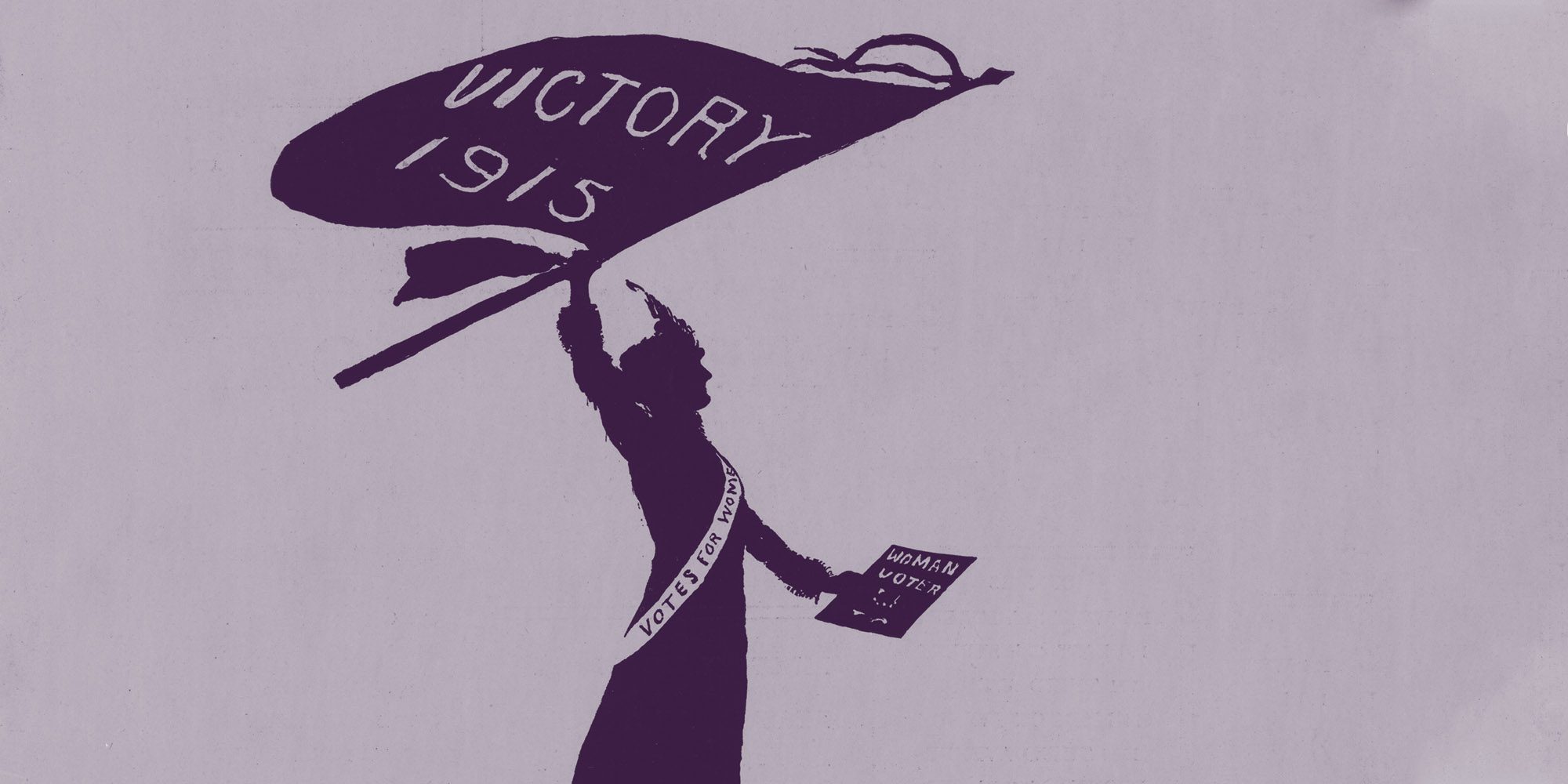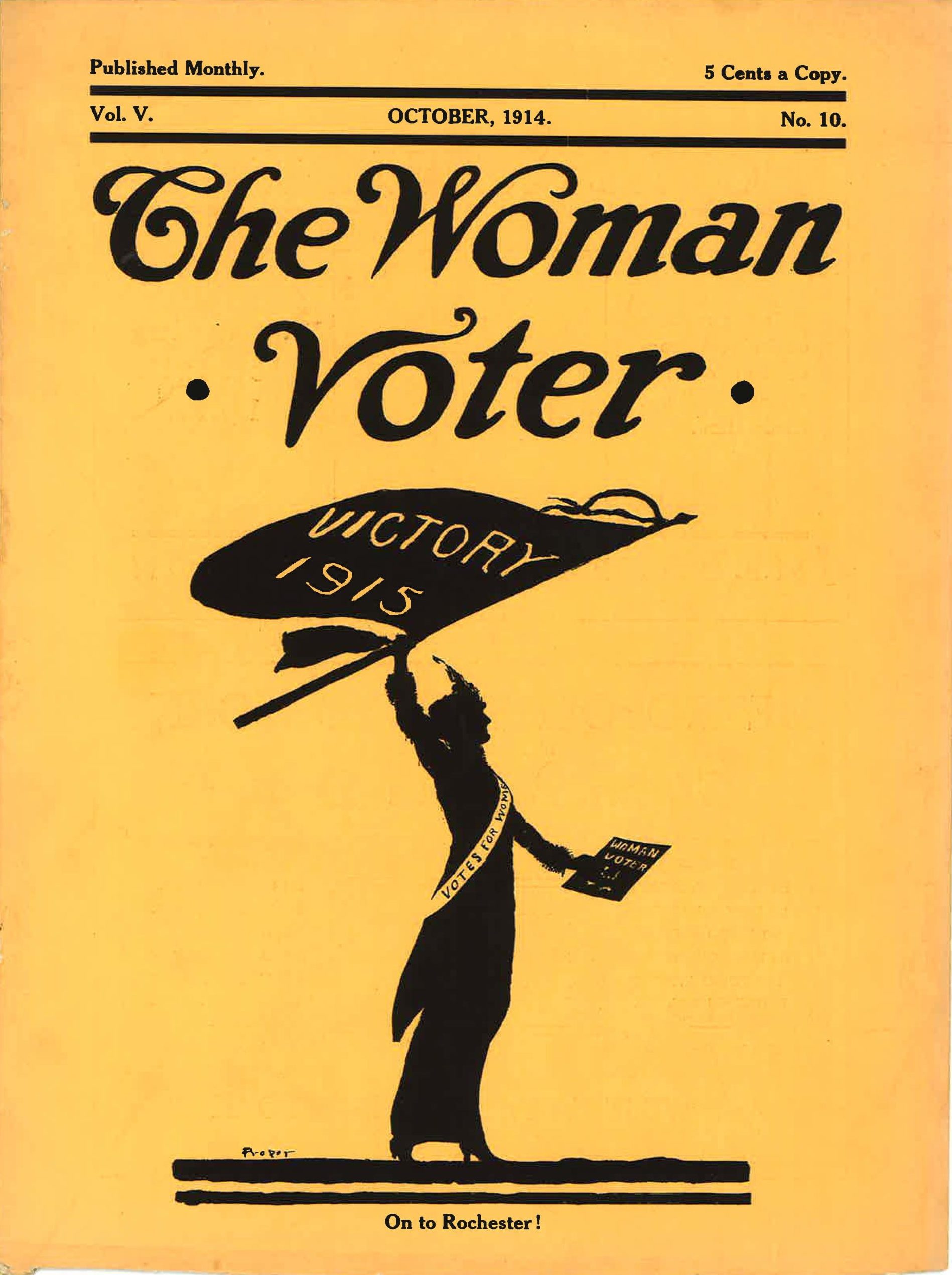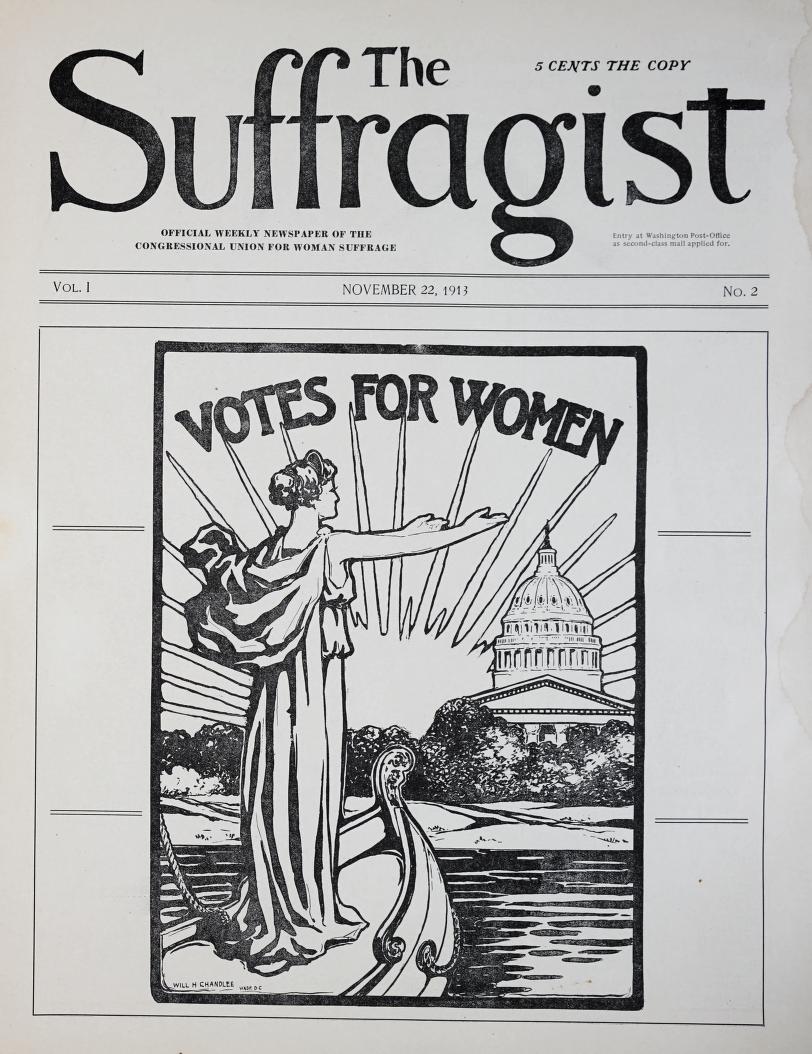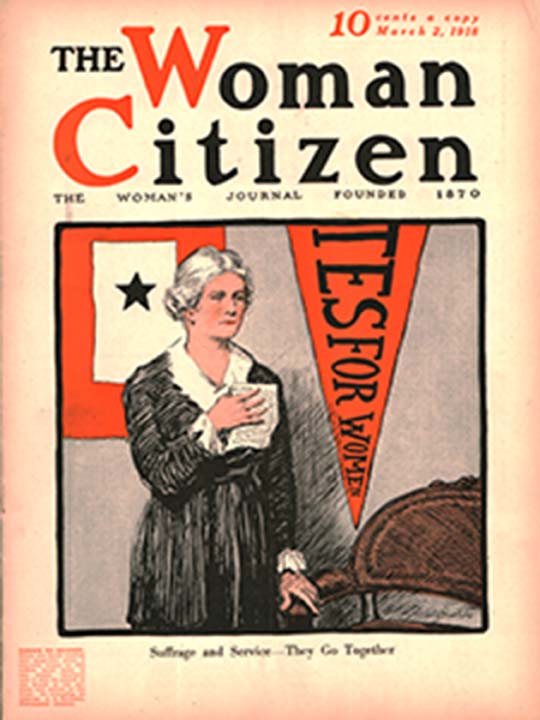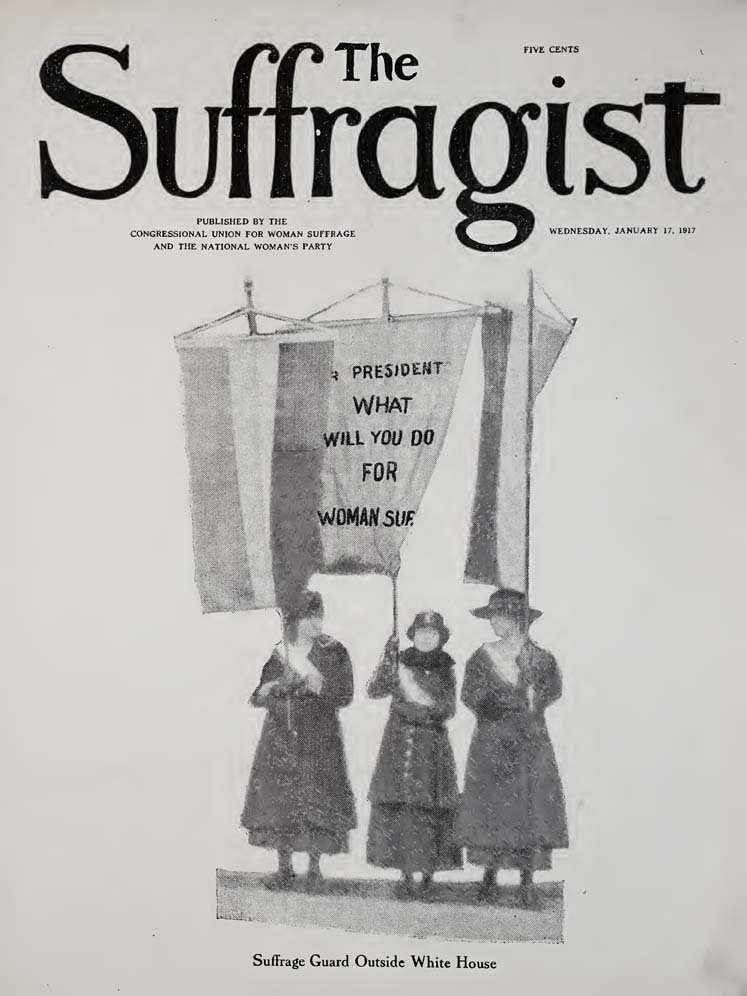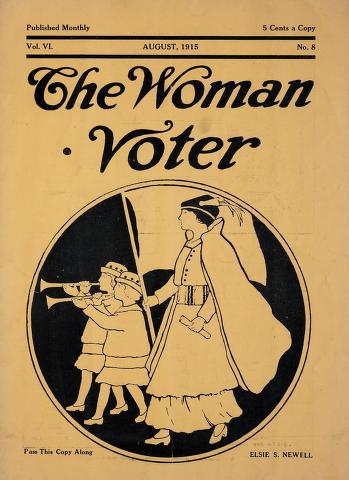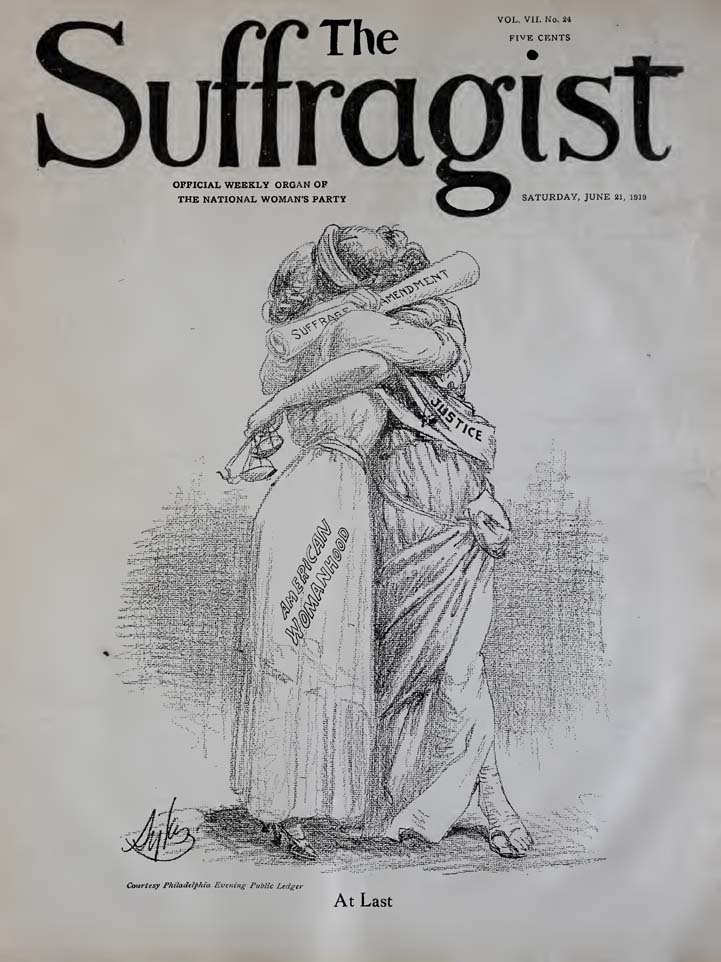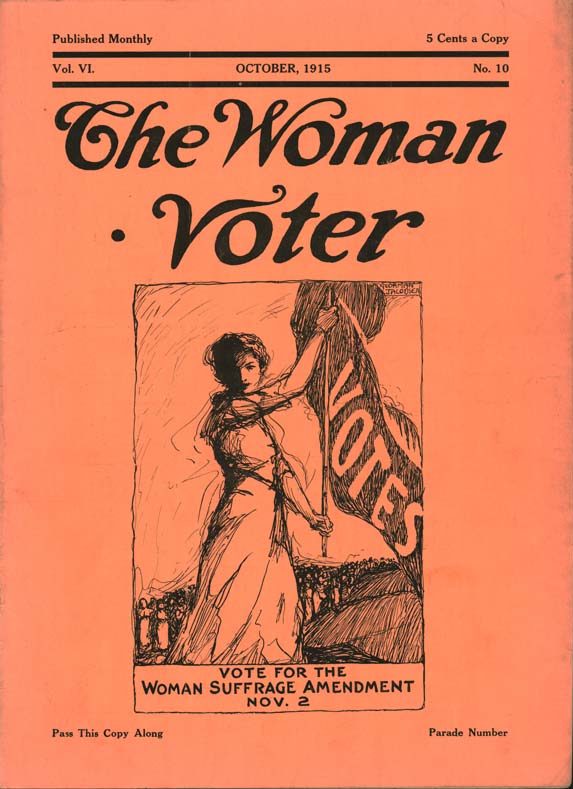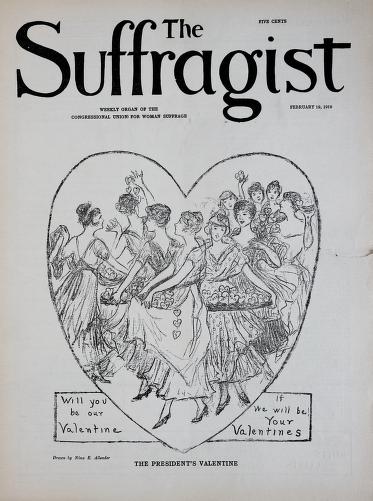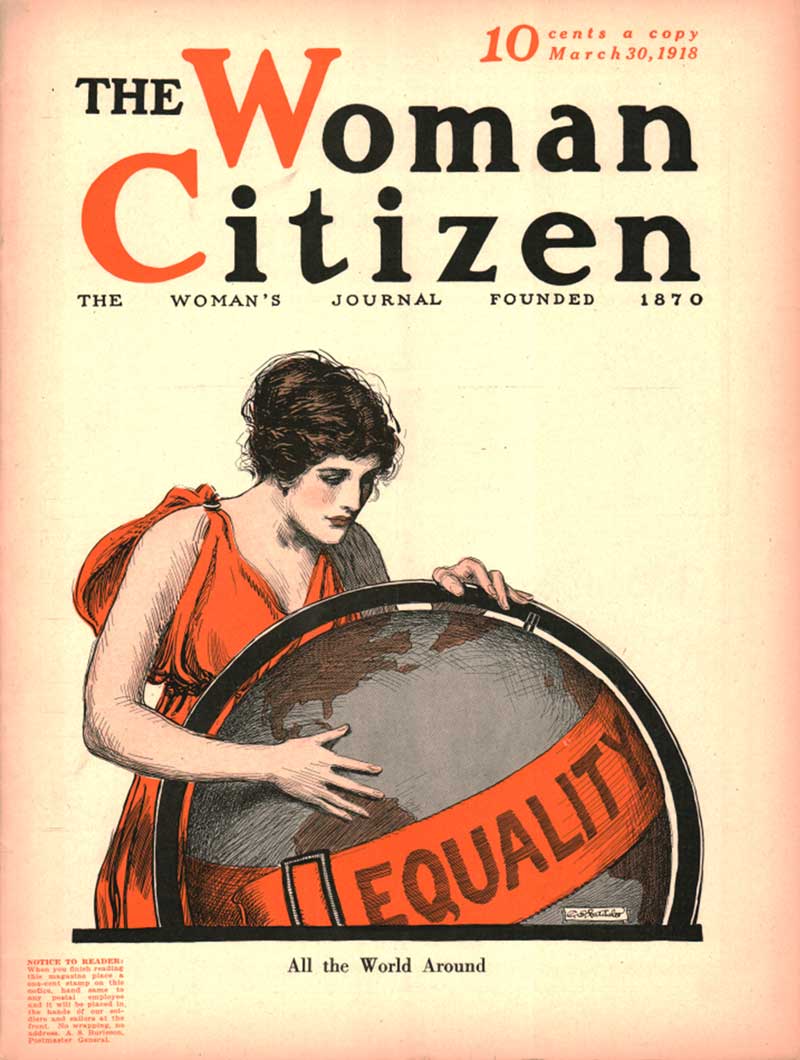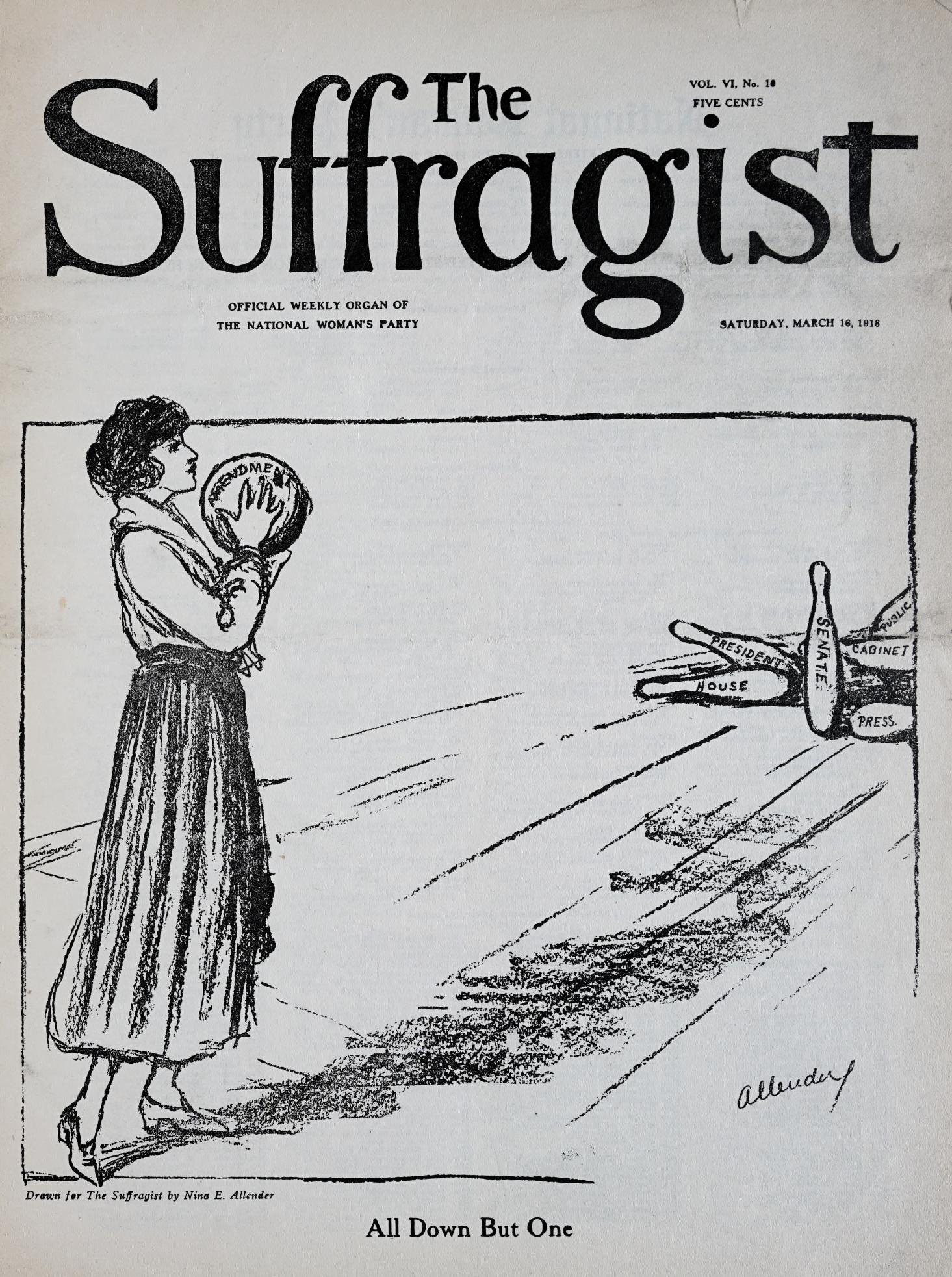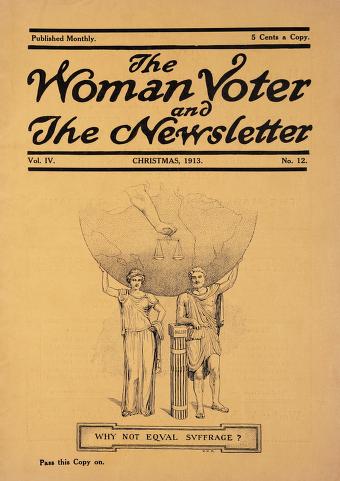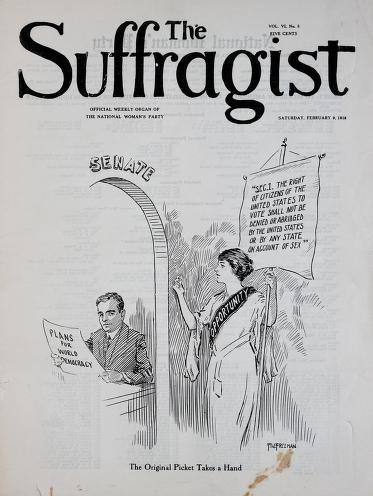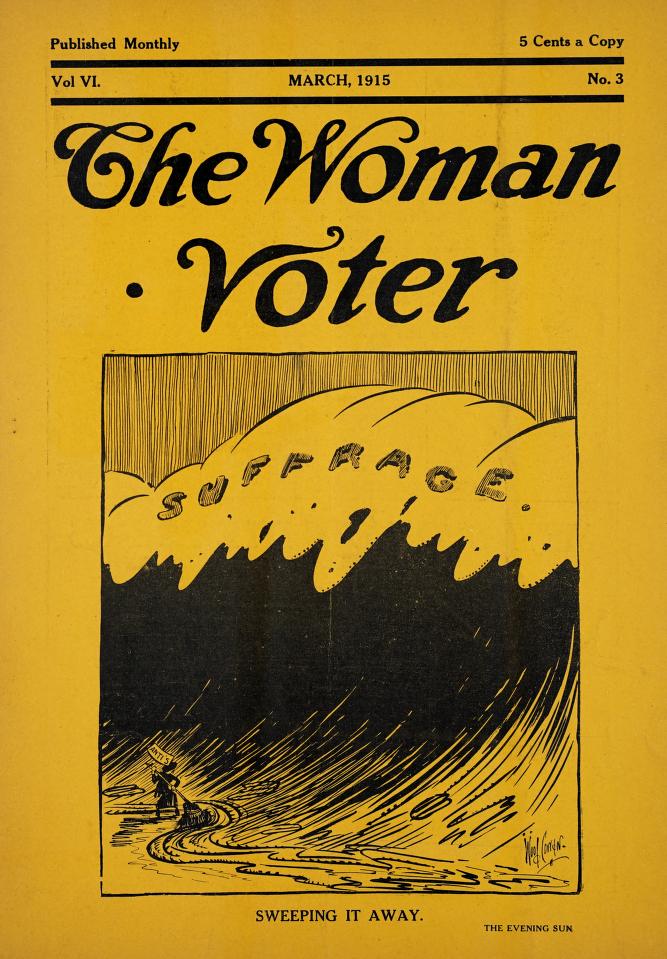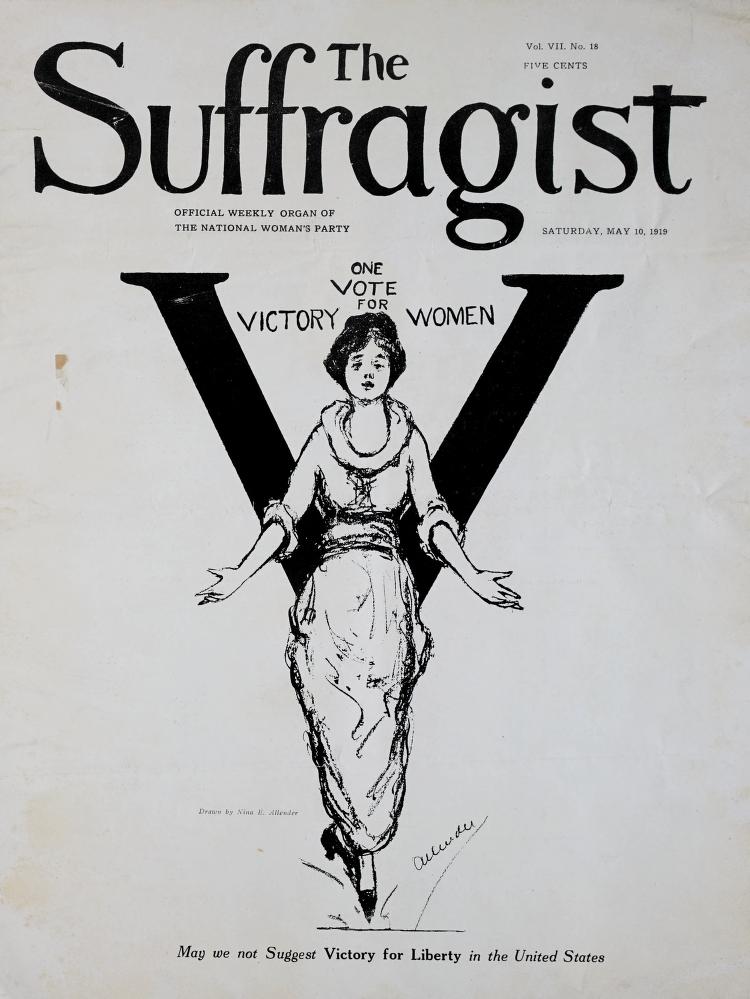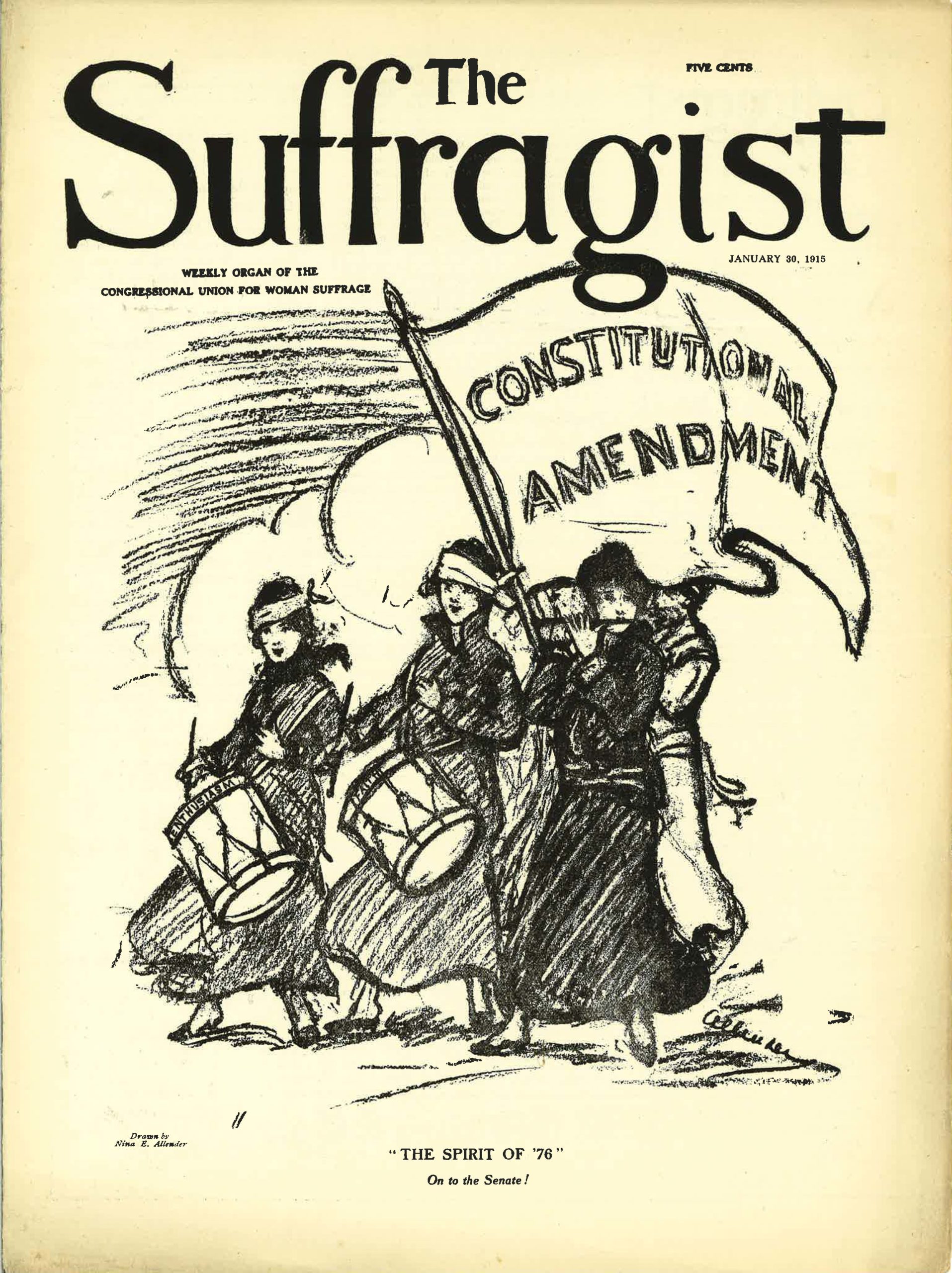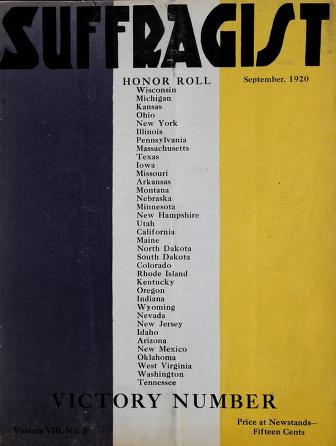Women of the Nation Arise!
Staten Islanders in the Fight for Women’s Right to Vote
Acknowledgements ResourcesPublicize
Suffragists claimed space in newsprint and published their own periodicals, arguing passionately in favor of women’s political equality.
They staffed booths at carnivals and country fairs to distribute their literature and recruit supporters.
“[Recognize] the power of organized women’s clubs…to facilitate…national prosperity, good government, public education… advancement in arts and sciences and all departments of the world’s work…”
– Mary Lawton Metcalfe
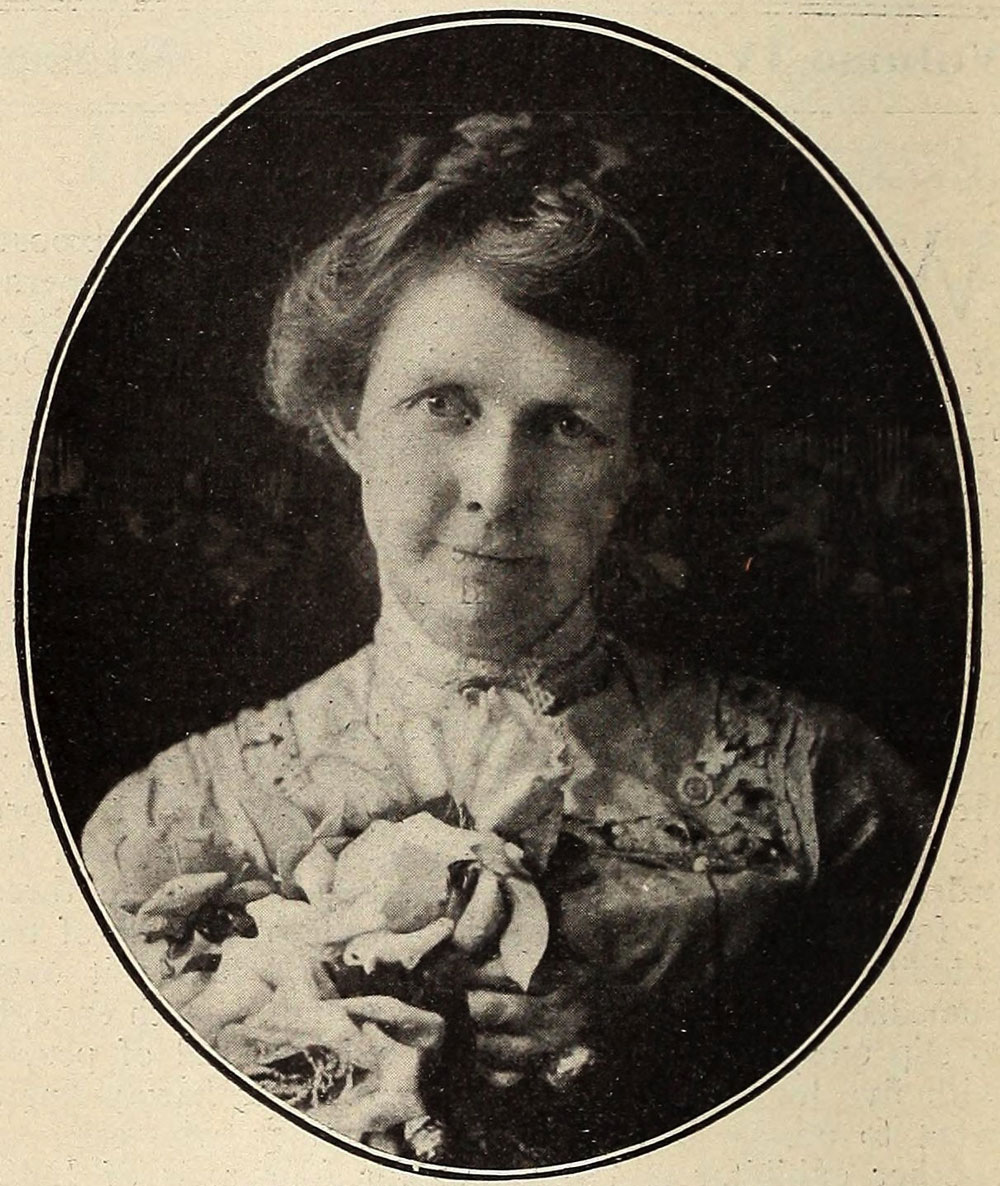
Newspaper Women
Many suffragists were newspaper reporters who were experts at communicating their message. On Staten Island, some of the most extensive coverage of suffrage activism came from the women journalists at the Staten Island World. Women writing under pen names were the main contributors to one of the paper’s columns called “Staten Island Women Folk.” Columnists used witty, forceful writing to report enthusiastically about suffrage activism on the Island, while also treating other issues of interest to contemporary women. The journalists’ arguments also reflected the racial, economic, and ethnic biases that divided the broader woman suffrage movement.
Mary Lawton Metcalfe was influential in Staten Island society and was a columnist for the Staten Island World. She wrote under the pen name Electra Sparks in favor of woman suffrage and social reforms like food purity and price regulations as well as on the possibilities of the burgeoning technology of film. Metcalfe was instrumental in organizing women’s clubs’ commanding presence at the 1910 Richmond County Fair at Dongan Hills. She covered the fair in detail for the paper.
On a national level, Ida B. Wells was one of the leading suffragist-journalists. An anti-lynching activist, she saw voting rights as essential to expanding civil rights. As founder of the Alpha Suffrage Club in Chicago, she famously marched in an integrated delegation at the 1913 Suffrage Parade in Washington, despite the plan that the parade would be segregated.

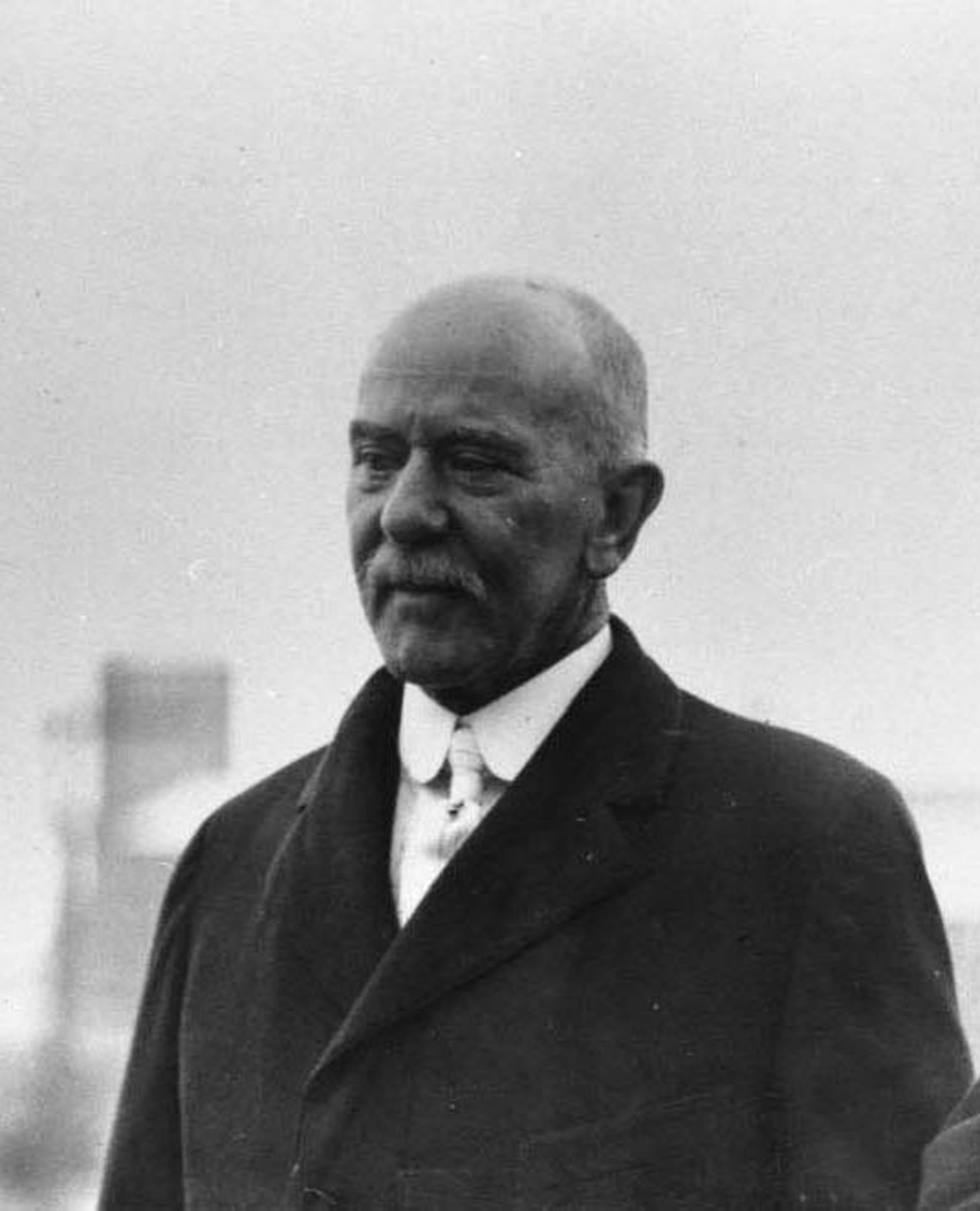
Photograph, 1917 Collection of Staten Island Museum
The Suffrage Press
By publishing their own periodicals, suffrage organizations retained control of their message and reached new audiences. They communicated their position to readers through news articles, editorial columns, political cartoons, donor lists, and direct reports from the local organizations that were on the front lines of the suffrage fight. The Staten Island Museum’s collection of periodicals was donated by Museum founder Arthur Hollick and his wife Adeline Hollick and features three titles: The Woman Voter, a local paper published by the New York State Woman Suffrage Association, and two national papers The Suffragist, published by the National Woman’s Party, and The Woman Citizen, published by the National American Woman Suffrage Association.
A scientist by trade, Hollick was one of the founders of the Staten Island Museum. He was passionate about Staten Island’s natural and political history and made efforts to preserve both specimens and documents for future study. He married Adeline Talkington in 1881. By the 1910s, he was director of the Museum, and both he and Adeline were involved in the woman suffrage movement. They attended suffrage events in New York City and Washington D.C. and preserved the event programs and postcards in the Museum’s collection alongside the suffrage periodicals. Hollick meticulously collected suffrage materials, writing to fellow suffragists and even the offices of the papers themselves to track down missing issues and create complete collections, ensuring that future generations would be able to learn about the cause from the suffragists in their own words. The periodicals were a primary source of information for this exhibition.
You can view the full collection of Staten Island Museum’s digitized periodicals at Archives.org here.
